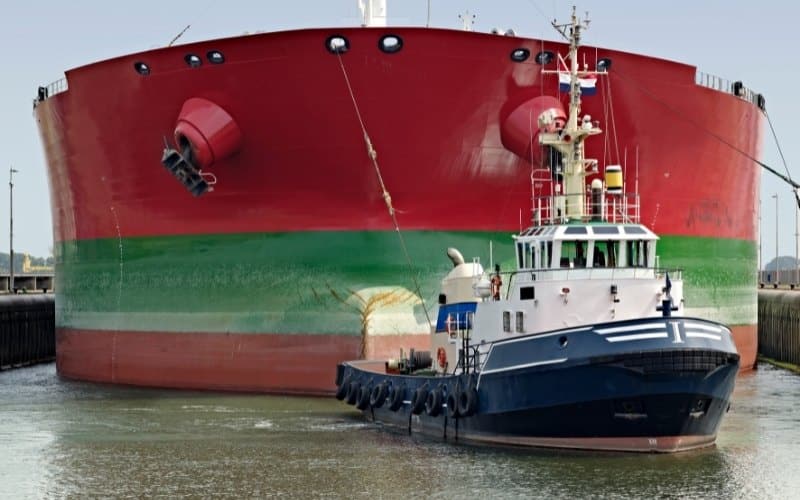
Preparations For Emergency Towing Of Ship
We’ve all seen the emergency towing booklet onboard a merchant vessel. Owing to its importance and the risks that are involved with it, an amendment was made to the SOLAS Convention Chapter II stating that all passenger and cargo ships built on or before 1st January 2010 (cargo sips built before 1st January 2010 to have one not later than 1st January 2012) were to be provided with a ship-specific emergency towing procedure. A detailed read of the amendment gives the ship officer a solid idea of the risks involved and ways to avert them.
So let us see the 10 important points that must be kept in mind in order to execute the procedure efficiently:
1. Safety: Safety is the first and foremost aspect while carrying out any and every duty on ship. Specifically speaking in this regard, the Chief Mate must be in contact with the Bridge at all times. All LSA/PPE must be donned and the crew must be pressed to follow safety guidelines at every step. Ropes/wires under tension can be disastrous and hence the crew must step aside to the safe zone when the same happens. It’s always better to have the minimum required number of people on deck at the time to avoid commotion and confusion.
2. Lights and Signals: The towed ship must comply with the Rules of the Road and display relevant lights and signals. Their functionality must be checked before they are due to be operated. It’s important to avoid putting vessels in the vicinity at risk (thereby, avoiding the same to own vessel).
3. Draught: The vessel must have draught suited to her needs through the duration of the voyage. It’s very important to consult relevant authorities about the characteristics of the water body to prevent unnecessary events such as grounding.
4. Watertightness: Prior to the voyage, the watertight integrity of the various openings must be checked. Hatches, portholes, valves etc. must be checked to ensure that they’re in place for the duration of the voyage.
5. Securing Arrangements: Securing arrangements for the cargo, stores, galley etc. must be exercised prior to the voyage to prevent unwanted collateral damage within the vessel.
6. Stability: Perhaps the most important of them all is- stability. Towed vessel should have sufficient stability with respect to all the conditions (loaded or ballast) that are to come about during the course of the voyage.
7. Rudder/Propellor: As and when deemed necessary, the rudder is best kept amidships. Along with that, the engine room must be informed well in advance to keep the propeller shaft from turning.
8. Ship’s Particulars: A fully detailed data sheet of the ship’s particulars must be kept at hand before the initiation of the voyage. This includes information to the last details; anything that might come in handy to maintain the safety of the vessel and the personnel involved in the procedure.
9. Sea State: The state of the sea is crucial to the degree of smoothness with respect to the voyage. Information must be obtained to the closest accuracy about the expected state of weather and sea, well prior to the voyage. All references such as VTS, via VHF communication with coast stations, Admiralty Publications, bespoke ship software etc. must be used to obtain specific information about the same.
10.The Emergency Towing Booklet: The emergency towing booklet, which contains information pertinent to towing, must be kept handy and conspicuous before and throughout the procedure. Although the booklet can only serve a purpose that is more suggestive than coercive, it must be referred to as it has ship specific information with the appropriate drawings and other towing arrangements.
Not every vessel has state of the art equipment to conduct the procedure to maximum precision. Limitations might be in place but that shouldn’t be a deterring factor in predetermining the level of accomplishment. Not to forget, the safe working loads of all fittings must be adhered to at all times. A sudden jerk or backlash can result in a lot of damage to property. One of the foremost things that should not be forgotten is that the any emergency situation during the entire process of towing barely leaves time for corrective action. Therefore, it is imperative to adhere standard operational procedure, keeping in mind the individual aspects and therefore, individual capacity of every vessel. The crew must be thorough with the entire procedure, wherein they are clearly and candidly designated each task to avoid any confusion. Evaluations must be put in place in advance to the expected time of towing. Since towing is part of the ISM code, one must understand that, in any case, safety is always of paramount importance.
cr: marineinsight


